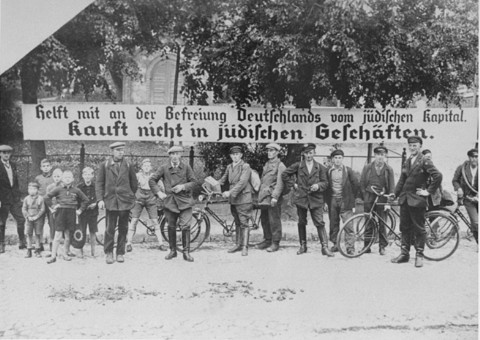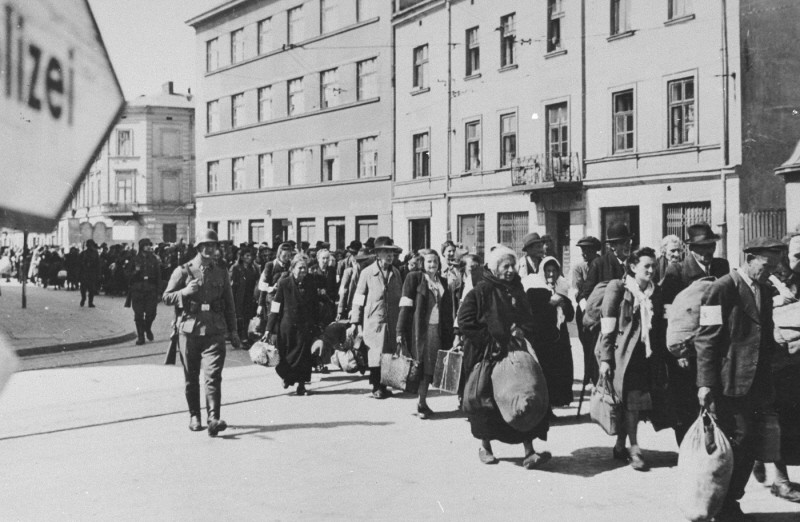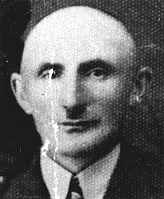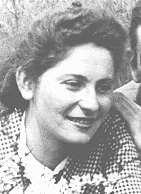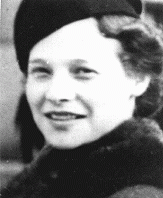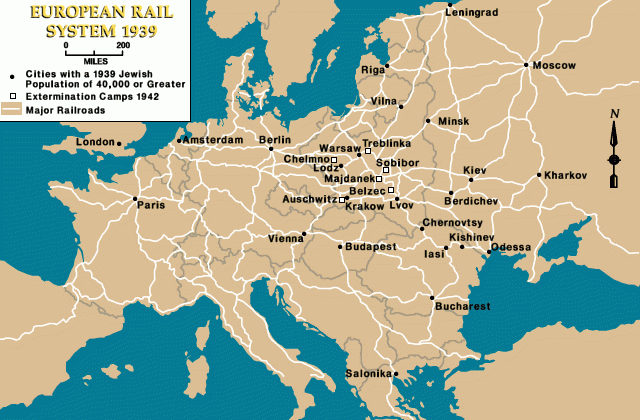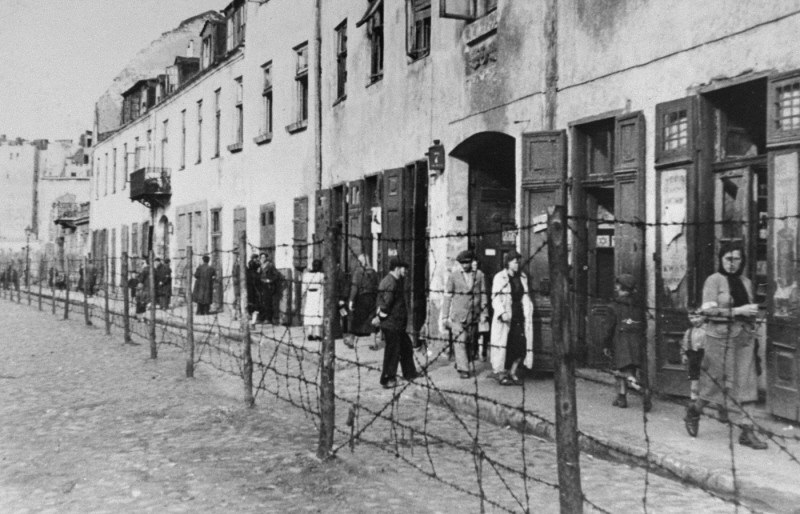
The "Final Solution"
During World War II (1939-1945), Nazi German leaders developed a plan to deliberately and systematically murder all European Jews. The Nazis called this plan the “Final Solution to the Jewish Question” (“Endlösung der Judenfrage”). They also referred to it as the “Final Solution” (“Endlösung”).
The Germans carried out the “Final Solution” by planning, coordinating, and committing the mass murder of Europe’s Jews. With the help of their allies and collaborators, the Nazis murdered six million Jewish people through brutal treatment, in mass shooting operations, and in gas chambers.
The “Final Solution” (1941-1945) was the tragic culmination of the Nazis’ increasingly radical anti-Jewish policies. It is the last stage of the Holocaust (1933-1945).
Did the Nazis immediately begin to carry out the mass murder of Jews?
No. When the Nazis came to power in Germany in 1933, they did not immediately start to carry out the mass murder of Jews. However, antisemitism was a central part of Nazi ideology. Once the Nazis controlled the German government, they used their power to persecute Jews in Germany.
In the 1930s, the Nazis discriminated against Jews. They excluded them from German society. They boycotted and confiscated Jewish-owned businesses. They passed discriminatory laws, such as the Nuremberg Race Laws. They attacked Jews in a nationwide riot called “Kristallnacht,” or the “Night of Broken Glass.” The goal of these policies was to make life in Germany so unbearable that German Jews would choose to emigrate. The Nazis’ ultimate aim was to make Germany “cleansed of Jews” (judenrein).
The Nazis’ efforts to persecute Jews became more radical over time.
How did the outbreak of World War II change the Nazis’ anti-Jewish policies?
World War II marked a turning point in how the Nazis treated Jewish people. Before World War II (1939-1945), the Nazis had primarily used laws to persecute German Jews. But war changed things in two main ways. First and foremost, war brought millions more Jews under Nazi control. Second, the war led the Nazis to consider more radical ideas.
During the first two years of World War II, the Nazis targeted Jews using policies of ghettoization and forced relocation. Both of these measures physically removed Jewish populations from their homes and communities. They attempted to segregate and isolate them from non-Jews.
In 1939 and 1940, German authorities began to isolate Jews in German-occupied Poland. They forced them to live in separate areas of cities called ghettos. The occupiers subjected Jews to extreme overcrowding and unsanitary conditions. Many ghetto residents died from disease, starvation, and brutal treatment.
At the same time, the Nazis carried out early experiments with deporting Jews from Germany. They also considered forcibly relocating entire Jewish communities to what they considered distant, undesirable, or isolated places. They explored plans to establish a reservation for Jews in the Lublin district of German-occupied Poland. They also considered sending Jews to Madagascar, an island off the African coast. Ultimately, these plans were too hard to carry out. So, the Nazis looked for other solutions to get rid of the Jewish population in Germany and in German-occupied territories.
When and how did the Nazis begin to systematically carry out mass killings of Jews?
The Nazis began to systematically commit mass killings of Jews in summer 1941 after Germany attacked the Soviet Union.
Special SS and police units followed the German military into Soviet-controlled territory. Their official tasks included guaranteeing security behind the front lines. They were also tasked with eliminating Nazi Germany’s real and perceived enemies. They targeted Communists and Jews, among others. In practice, these units carried out mass shooting operations. At first, they shot Jewish men of military age. But then, these units soon began to murder entire Jewish communities. Their victims included children and the elderly. Sometimes, these units used mobile gas vans to murder Jews and others with poison gas.
The systematic mass shootings and gassings reflected the radicalization of Nazi anti-Jewish policies. They marked the beginning of the “Final Solution.”
What role did the killing centers play in the “Final Solution”?
As a key part of the “Final Solution,” the Nazis created killing centers to commit mass murder. In English, killing centers are sometimes called “extermination camps” or “death camps.” The Nazis built the killing centers for the sole purpose of efficiently murdering Jewish people on a mass scale.
Nazi Germany operated five killing centers: Chełmno, Belzec, Sobibor, Treblinka, and Auschwitz-Birkenau. The primary means of murder at the killing centers was poisonous gas released into sealed gas chambers or gas vans.
The Germans deported Jews to these killing centers from all over Europe. Deportations usually took place by train. Conditions on deportation trains were overcrowded and inhumane. Most of those deported to the killing centers were murdered upon arrival.
Are the “Final Solution” and the Holocaust the same thing?
No. The “Final Solution” is not exactly the same as the Holocaust. Rather, the “Final Solution” is part of the Holocaust.
The Holocaust was an evolving process that took place from 1933 to 1945. It did not begin with mass murder. It began with the systematic persecution of Jews in Nazi Germany.
The Final Solution was the systematic mass murder of Jewish people between 1941 and 1945. It was the tragic culmination of the Holocaust.
The Holocaust encompasses both the systematic persecution of Jews beginning in 1933 and the “Final Solution”—the systematic mass murder of Jews between 1941 and 1945.
How many Jews were killed in the Holocaust?
In total, the Nazis and their collaborators and allies murdered six million Jews in the Holocaust. This was approximately two thirds of Europe’s prewar Jewish population.
Key Dates
February 1940
The Creation of the Łódź Ghetto
In February 1940, before the start of the “Final Solution,” the German authorities establish a ghetto in Łódź, a city in German-occupied Poland. By April 1940, the Germans force more than 160,000 Polish Jews into the Łódź ghetto. The ghetto is surrounded by a barbed wire and wooden fence. Forced labor, overcrowding, and hunger are the dominant features of life for those imprisoned there.
The creation of the Łódź ghetto is an example of German efforts to isolate Jews from the non-Jewish population. It is a precursor to the “Final Solution.”
October and November 1941
Deportations of Jews from Western and Central Europe to the Łódź Ghetto
In October and November 1941, German officials deport approximately 20,000 Jews from western and central Europe to the Łódź ghetto. This includes Jews from cities such as Berlin, Vienna, and Prague. Many of these Jews are elderly and sick. More than 3,000 of them die in the first seven months. The arrival of these deportations exacerbates overcrowding.
These deportations are part of a major escalation of Nazi anti-Jewish policy in the fall of 1941. At this time, Nazi leaders decide to try to make certain German cities “cleansed of Jews” (“judenrein”). The deportations to the Łódź ghetto are a step in this process.
January 16, 1942
Deportations of Jews from the Łódź Ghetto to the Chełmno Killing Center Begin
On January 16, 1942, German authorities begin deporting Jews from the Łódź ghetto to the Chełmno killing center. These deportations are part of the “Final Solution.” The Germans establish the killing center in Chełmno to murder Jews from the Łódź ghetto and the surrounding areas. The killing center is located only about 30 miles from the city of Łódź. Gassing operations had begun at the killing center in December 1941. At Chełmno, the Jewish deportees are killed in mobile gas vans.
By late summer of 1944, German authorities murder approximately 77,000 Jews from the Łódź ghetto in Chełmno. In total, at least 167,000 Jews are murdered there.
Chełmno is one of five killing centers built by the Nazi German regime as part of the “Final Solution.”


